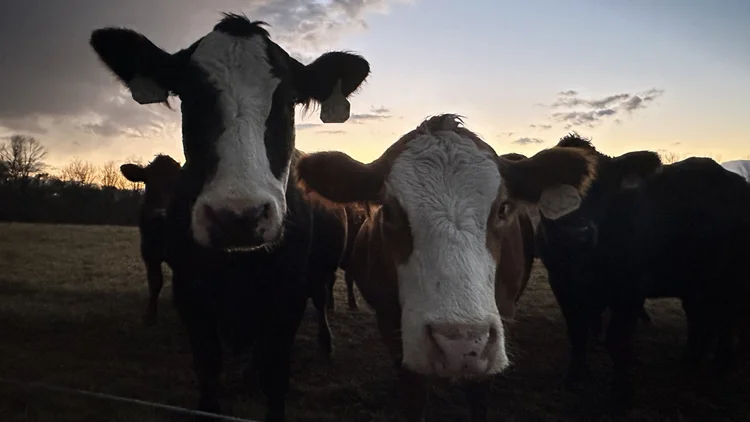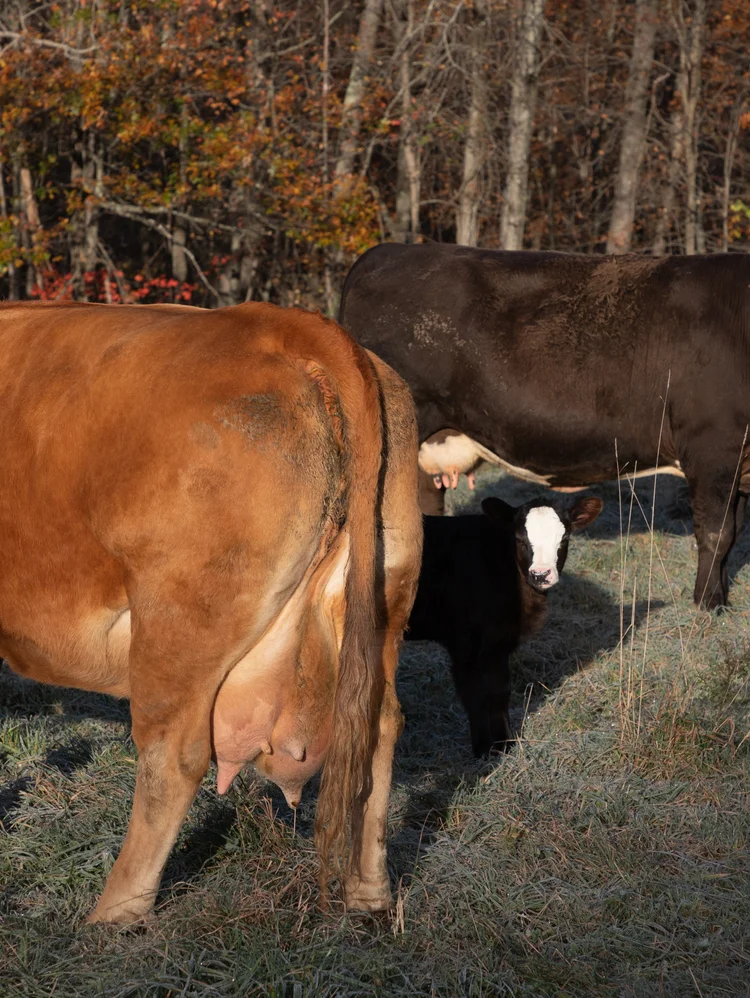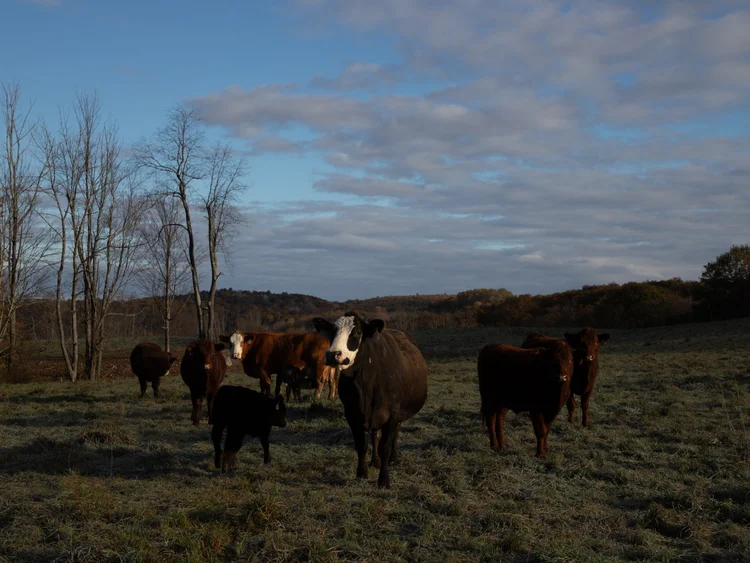Your basket is empty
Already have an account? Log in to check out faster.
Already have an account? Log in to check out faster.

“Anyone who reads or listens is aware of the fact that America’s so-called progress and prosperity has been kept alive with debt, war and defense spending, debt expansion, and foreign give aways on the broadest scale in history. Millions of family farmers gave been driven out from the land in this process.”
― Charles Walters, Unforgiven 1971
“I’m just trying to do the only thing that makes any sense anymore.” said Mike. His leathery skin seeming to absorb the mid-day heat of the July sun with comfort, like it was built for this. His bright green eyes turned to me and he asked, “What percent of Americans do you think are involved with the production of raw materials required for human life?”
“I dunno,” I answered unintelligently.
“If you had to guess, what would it be?” he asked again, this time making a game of it.
“I’d guess 15%,” I said, “involved in logging, farming, and clothing production. 15 sounds right to me.”
“Under 5%.” He smirked, knowing that it was a number worthy of equal parts amusement and disbelief. “This is why we can be convinced of anything, because no one knows anything about the basic truths of life. The basic resources that allow us to live, we are complete aliens to. All that we’ve all been taught how to do is be thieves and slave owners. We steal from the wealth of those producing raw materials and then we use our slaves in far away lands to process them for us at a rate of pay so low that no one could ever imagine those trying to make a living off of producing stuff could pay for food, let alone own a home.”
He and I had just finished loading three of his Red Devons into the livestock trailer to bring to our farm. The remaining cattle in the group we had taken them from had resumed grazing as if nothing had happened. We watched quietly for a bit, listening to the gentle sounds of the animals as their tongues circled large swaths of grass and clover and their teeth clipped them at the base, to be swallowed into the first chamber of their rumen.
Amidst those sounds as the back drop, he looked at me, more serious this time and said, “Where does wealth come from? Not the crony wealth that modern man has fallen in love with, but real, long lasting wealth.”
I simply stared at the majestic beasts in front of me and nodded my head, knowing I’d give the wrong answer.
“Land, labor and capital. Read Henry George’s Progress and Poverty (1879). He lays this out clear as day, right as the first forms of speculative economics were beginning. Land is the raw resources from the Earth, labor is what it takes to make those resources valuable for man, and capital is what happens when land and labor create something. Anything beyond”, he said, “isn’t true wealth, it’s gambling.”

On my ride back down south to Red Hook, passing by the skeletons of the agri-economic hub that the Hudson Valley was for centuries, the reality of the current wealth status for rural America sinks in. Barns have become obsolete tokens for nostalgia, that at best get flipped into chic weekend homes or at worst are left to rot. Many fields left dreamless, to lay fallow, not even worth the time to be mowed once a year, soon to become a wood lot stuffed with invasive trees. The time when each of those barns had a family behind it, filling it with hay, and milking cows in them twice a day seems abstract and far, even though it wasn’t even a lifetime ago that this was the case. Most of these barns were being used only 50 years ago. Farms atrophy incredibly quickly.
The city of Hudson, 18 miles from us, was founded as a whaling town where early settlers would bring their whales up the river from the ocean to process into food, soaps and other household items. After the advent of the railroad, the river’s advantages for production became obsolete and the town reinvented itself into a center of industry where ironworks, brickworks, cement, engines and other necessary items for the growing city 100 miles south were produced (Schram, 2004). Rhinebeck, only a 15 minutes drive from our farm, was famous for its millwork and furniture building, as well as its wool production (Smith, 1881). Salt Point, New York was titled so because the cattle being transported down via train from further north would be given salt from the local mine to enhance their water retention and increase their weight on the scale at slaughter time. The not so distant past of agriculture is in the water we all swim in.
The Hudson Valley has a rich history of being the resource center of the city south of it. One of the reasons New York City was such an advantageous location for an urban center was the Hudson River’s ability to efficiently shuttle resources down from the rural valley were food and other goods were produced.
Many New Yorkers take for granted the incredibly abundant area we live in. The Northeast was the first location in the nation to be settled this densely, and the reason was because of our high rainfall rate along with some of the richest soils in the world due to hundreds of years of livestock production (Swanson, 1955). Per acre, we can feed more people here than most other parts of the continent and the globe. This truth of how much we once farmed here is evident in the skeletons of agriculture we’re surrounded by. So, what changed? Why are all the barns abandoned or renovated into a center of consumption rather than production?

These dynamics are extremely complex, and there is no one reason as to why we’ve traded tractors for Teslas and started wearing Carhartt’s for fashion instead of function. Industrialization made a huge and somewhat inevitable impact, but even more so was the impact of fiat currency once we left the gold standard (Walters, 1971).
The entire endeavor of agriculture is comprised of one person and his family producing a surplus of goods so that other people may do things other than produce food. Whatever those other things are, there is an exchange at some point in the form of currency or barter in which the value that the non-agrarian produces is exchanged for the food produced by the agrarian. It relies on others understanding the value in food. Anyone who is familiar with the production, cost and time invested in raising an animal or a plant, for that matter, knows its worth. Yet when currency has no objective value, but rather has subjective value, so does food.
Consumers and the corporations distributing food to them have demanded from farmers a price lower than their production cost. A pork butt in the grocery store for $0.99/lb is not the objective value of that meat; it is the subjective value that we’ve all assigned it, which means almost worthless. It is not true that food is so incredibly cheap because we’re so efficient at producing it in all our modernity. It takes more capital, fuel and resources to grow a modern feedlot pig than it ever has in history. The only thing that keeps farms going are government subsidies, which come with a catch. You must play the game the USDA demands of you to get these handouts. This means get big: buy more equipment, more facilities, more fertilizer, more Round-up, and the list goes on. Farmers are not incentivized to be efficient producers— they’re encouraged to be wasteful producers and excellent consumers. Which means swap out the 12 stall dairy barn (the historic norm around here) for a 5,000 cow feed yard. Even despite this massive scale, most of the farmers are still broke.
It’s only logical, given this brief history, that Hudson Valley farms are in large part gone. Given our abundant climate, and higher population density, farms have always been small here. Not because they had to be, but because they could be. A small farm indicates abundance because it means one 40 acre parcel, for example, could produce enough wealth to pay and sustain multiple generations of a family.
Yet now, it is a borderline humorous concept for one to be able to purchase a piece of land and pay for that land with the production of that farm. Not only here, but anywhere in the country and the world. It is more realistic for one to work in the city, speculating on turning debt into other forms of debt, and afford a farm than it is for someone to afford a farm off of the income generated by creating some of the most fundamental aspects human life. We have chosen to value luxury over the things that are necessary, assuming that what is necessary will always be there and what is luxury must be priority. That is where we put our money.

You may or may not agree with Mike’s world view— maybe there is space for more wealth generation outside of land, labor, and capital. However, we have come so far from our economy putting value in those things that I think a little Progress and Poverty lesson would go a long way in our government’s school system.
Bonds, mortgages, IRAs and loans are what we think of when we think of finance. You’d be hard pressed trying to find a business program in the country that teaches about the values of raw materials. Farms and finance have become oxymorons; we’ll let those simple rural folk inhale fumes and cut hay all day while the real-wealth people do that money stuff, which is, in a sense, managing debt. That is our entire economic system: debt based on theoretical money.
That being said, this pressure on the rural economy has created some value in making those who have survived the agricultural purge to require a degree of wit and ingenuity to make things work despite the odds. Although this is not the view of many urbanites including Mayor Bloomberg, the billionaire who in his presidential campaign discussed his thesis of a “brain drain” that took place in rural America post industrial revolution (Florida, 2019). Essentially, stating that all the smart folk moved into the cities leaving only the dummies among us to stay in the countryside. Not only is this thesis incredibly offensive to a large swath of American people, it’s a bold statement coming from someone who’s life depends on those rural fools producing food for him on a daily basis.
In contrast, I have found that those who have managed to keep their barns full and productive in spite of all the forces pushing against them are the kinds of people who can balance a ridiculously tight budget, build a house, reconstruct equipment and butcher an animal, all self-taught. They are generalists, not specialists. This is not something our massive supply chain encourages or desires. This may not be the kind of intelligence rewarded by our school system or a white collar employer, but it is intelligence. Additionally, I have found that the farmers who have stayed farming through this rural flight are almost exclusively organic farmers.
This is because true organic farming is only so scalable. Ultimately the exchange that organic farms aren’t participating in is replacing people with chemicals. Real organic farming requires people, and the premium for the cost of raising organic food paid directly to the farmer is what makes the difference between an abandoned barn and a productive one.
Although many things have eroded in the Hudson Valley, and to start a farm now may be one of the most difficult times in history to do so, a reclamation of a productive countryside is at our fingertips— the most central element of it being price. The farmer in the story is only one person. Ultimately, it is the consumers willing to pay him the price of his production who are the heroes of the small farm. What we value, we create.

If you ever have any questions, want to chat, or are interested in seeing our operation first hand, please don’t hesitate to give us a call or drop us an email!
Bennett & the Northaven Pastures team
| Annotations:
George, Henry. Progress and Poverty. 1879. Florida, Richard. The Geograohy of the Brain Drain in America. 2019. Bloomberg. Margaret Schram. Hudson’s Merchants and Whalers: The Rise and Fall of a River Port 1783-1850. Black Dome Press, 2004. "Salt Point CDP, New York". U.S. Census Bureau. Retrieved August 26, 2022. Smith, E. M. (Edward M. ). Documentary History of Rhinebeck. The Library of Congress. Rhinebeck, N.Y. 1881. Swanson, C.L.W. The Net Worth of Soils in The Northeast. 1955. Walters, Charles. Unforgiven: The American Economic System Sold For Debt and War. 1971. |